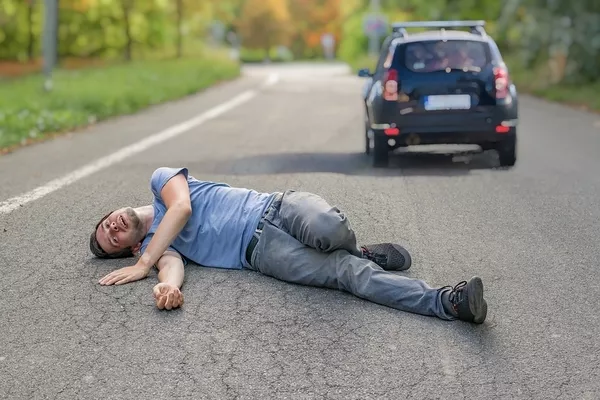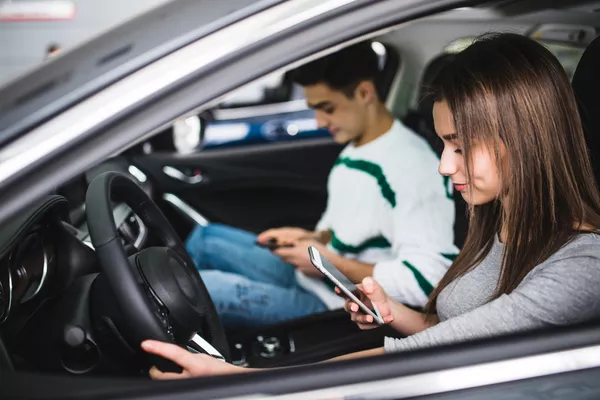Crime has no bounds; wherever there’s something to be taken, there’s someone planning and plotting on how to execute it. And indispensable as cars have become in our everyday lives, even they are not exempt from activities that run afoul of the law, whether they are the objective of the particular crime in question or just the means to an end.
Philkotse.com has compiled a list of some of the most common car-related crimes committed in the country.
1. Carnapping
Simply put, carnapping is a crime whose primary objective is the forcible takeover of a vehicle.
A portmanteau of “car” and “kidnapping”, the term has become a catch-all phrase to define taking another person’s car whether in the presence or absence of the legal owner; Western countries use the more distinct label “carjacking” as combining the words: "car" and "hijacking", to specifically describe stealing a car in the presence, and without the consent, of the legal owner.
While many carnapping incidents happen while the owner is away, there are also instances where the vehicle is forcibly taken by the perpetrator from the victim through intimidation, threats, and violence. As a crime of opportunity, carnappers usually strike in the wee hours of the night.

Carnapping is a crime whose primary objective is the forcible takeover of a vehicle
In order to avoid your car from being stolen, keep your doors and windows locked, especially when parked in a public parking space. Don’t leave valuables like laptops, mobile phones or fancy-looking bags inside the car, or at least keep them out of plain sight.
To further reduce the chances of losing your car, invest in anti-theft devices such as steering wheel clubs, alarms, and immobilizers. Most importantly, always have your comprehensive auto insurance updated, so that in the event that your car is unlikely to be recovered, at least you’ll be compensated.
>>> Read more: Most carnapped vehicles in the Philippines.
2. Hit and run
Just as there are literally hundreds of thousands of other vehicles on the road you drive on every day, there are also pedestrians use it as well. Sometimes, you’re going to cross paths with either of them through a stroke of unfortunate circumstance, resulting in an accident on the road. If the party at fault chooses to flee the scene, then you have a hit-and-run.

Incidents of hit-and-run are quite common when there is a car accident
Incidences of hit-and-run are quite common in the Philippines; these instances can occur whether at daytime or the middle of the night, and some are aggravated by the driver being intoxicated or under the influence of drugs. The rising popularity of dashcams and CCTV cameras have made it easier to identify the perpetrators of incidents like this.
Once caught, the perpetrator may face criminal charges from the aggrieved party and will be held liable for damage to property or injuries and loss of life, as well as for refusing to provide immediate assistance.
>>> Also check: A complete guide to avoid pedestrian accidents.
3. Reckless driving
Reckless driving is described as “the event in which a driver maneuvers his vehicle without regards for the safety of others around him”. In other words, a reckless driver simply doesn’t care if his actions behind the wheel result in damage or harm, posing a serious threat to the lives of other drivers, bystanders, and pedestrians.
If you don’t want to be classified as a reckless driver, avoid doing these things:
- Speeding excessively or going over the indicated speed limit.
- Refusing to slow down at school zones and areas where there are pedestrian lanes.
- Tailgating other vehicles for fun.
- Ignoring traffic signs and road markings.
- Failing to follow traffic rules.
- Racing against other vehicles, whether private or public.
- Constantly weaving along the road to pass through traffic.
- Attempting to escape when being flagged down by traffic enforcers.

Reckless driving is a serious traffic violation and can endanger the lives of other drivers, bystanders, and pedestrians
4. DUI
DUI is an acronym which means “driving under the influence”. This is another common offense that drivers are caught and charged for. The dangers of driving while being intoxicated or high range from compromised response time on account of reduced reflexes, to being reckless and arrogant due to lowered inhibitions.

DUI is one of the most common regulations that drivers are caught and charged for
>>> Must read: What to know about driving under the influence (DUI) & its sanctions.
Some intoxicated drivers are luckily caught when they happen to pass by a police or LTO checkpoints. In many instances, however, they are only found out after they’ve already been involved in an accident.
It’s not a crime to party, sure, but if you feel more than just a little tipsy from all those drinks or you’ve just taken some particularly powerful medication, it’s safe to stay away from the wheel until you feel better enough to drive, or have someone else drive you home.
Recent posts
- Complete list of LTO fines and penalties in the Philippines Aug 17, 2022
- How to prevent car theft in the Philippines? Jan 21, 2019
- A complete guide to safe driving in the Philippines Feb 11, 2019
- 7 must-know tips for every Pinoy driver to avoid car accidents Jan 29, 2019
- 10 common mistakes drivers make while driving Dec 06, 2018












